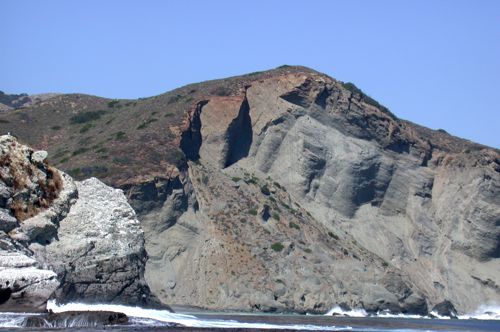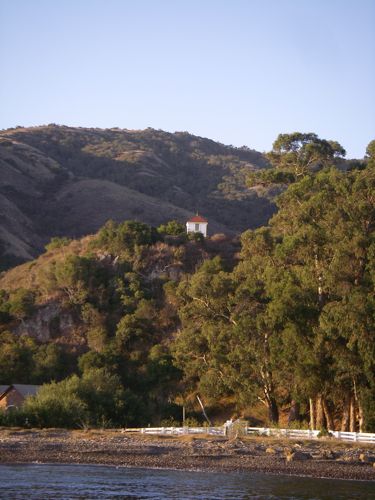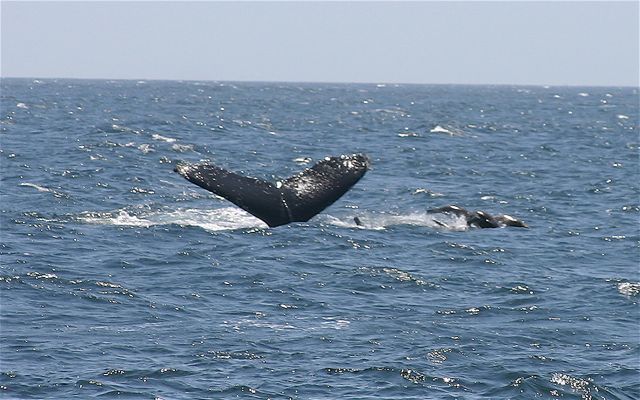Going Ashore on Santa Cruz Island
Santa Cruz Island is roughly 25 miles long and a skoshi under 100 square miles, making it the largest island in the Channel Islands chain.

The shoreline presents a microcosm of California: pine and oak on the north shore and arid, nearly desert on the south, and an area strangely reminiscent of Maui on the far western cliffs.
The Eastern quarter of the island is managed by the National Park Service and no permits are required for landing; however there are some areas that have restrictions. See Boating Info for National Park Service procedures and restrictions for the Channel Islands.
The Western three-quarters of Santa Cruz is managed by The Nature Conservancy.
Anchorages:

There are more than 15 overnight anchorages and many more that can be used in settled conditions. You can use the chart at the top of the page to select anchorages for further study.
You can anchor in any of the spots delineated, even the ones adjacent to Nature Conservancy holdings, but you cannot go ashore without a permit if you’re going to step foot on Nature Conservancy property.
Permits are required to go ashore. Permit Application Procedures.
If you’ve got questions about sailing in our area, just give me, Capt. Dan a call at 805.750.7828
Caveat
Always sail with up-to-date NOAA charts and keep them current using the weekly Local Notice to Mariners. And before you head out, check weather on VHF and on line. Also check NPS for warnings and closures.
National Park Service Info Santa Cruz Island
The Channel Islands are known as the Galapagos of North America.

Discovered by Europeans in 1542, there’s a lot of history. If you think of the First Nations, as Canadians refer to the earliest residents of North America, the history goes back long before Jesus, in fact, long before Moses.
But occasionally, whales chase us. We’ve never had anything like a hostile encounter. They’re slow moving and, seemingly, just inquisitive. On this encounter, we shifted to neutral ensure they wouldn’t be hurt by our prop. You’ll see that the whale on the left has had that experience with a large ship.












